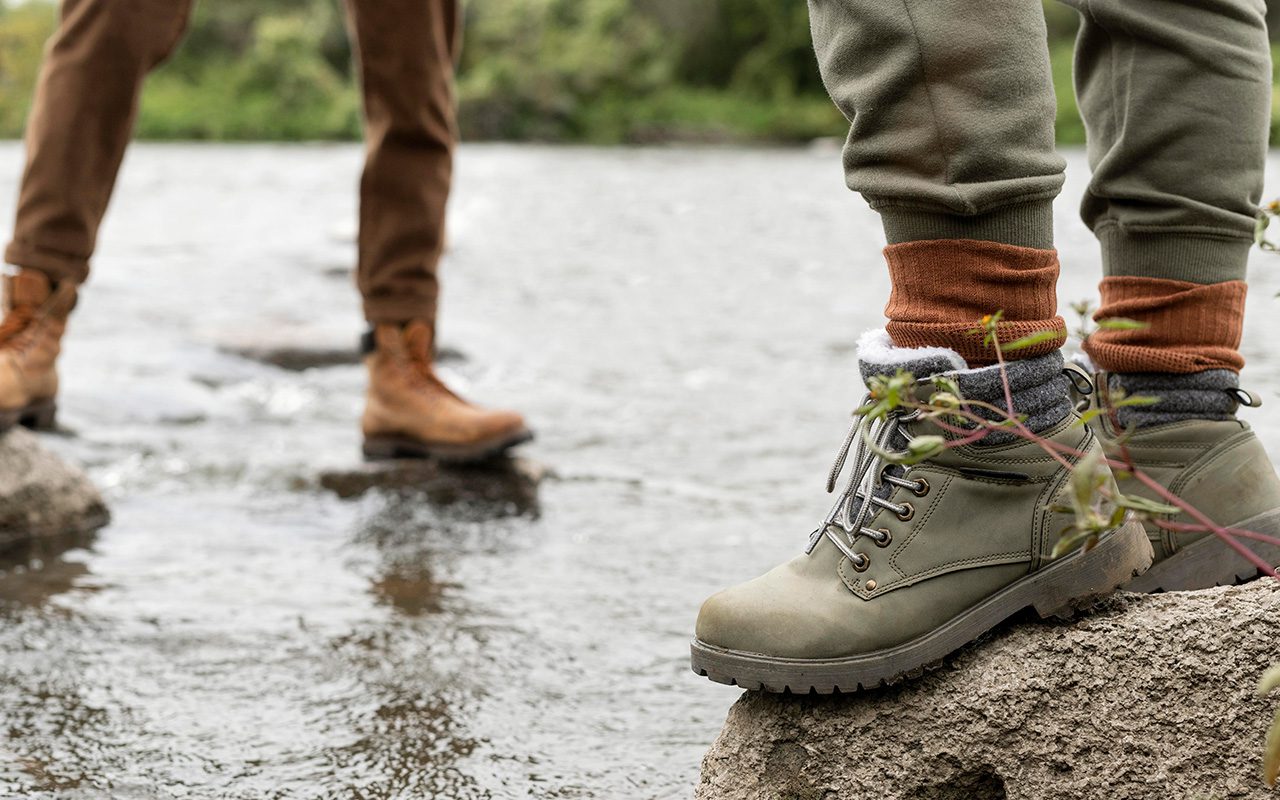How to Prevent Blisters, Fatigue, and Injuries on the Trail
Whether you’re deep in the backcountry or logging miles on a local trail, one thing is certain: your feet are your most valuable piece of gear. Take care of them, and your trip becomes a scenic adventure. Neglect them, and every mile turns into a painful struggle.
In this blog, we’ll walk through practical, trail-tested tips to keep your feet healthy, dry, and ready for the long haul.
1. Start with the Right Footwear
The single most important piece of gear for your hike is your boots or shoes. Here’s what to look for:
- Fit: Your hiking boots should be snug (but not tight) with room in the toe box. Always try on boots with the socks you’ll be wearing and break them in before your trip.
- Support: Consider mid- or high-cut boots for ankle support on rugged terrain. Trail runners work well for speed hikers or light loads.
- Sole Grip: Look for a sole with strong traction and lug patterns that match the terrain you’ll be in—mud, rock, snow, or dry trails.
Pro Tip: Never start a long trip in brand new boots. Break them in over short hikes first.
2. Socks Matter More Than You Think
Think of your socks as the shock absorbers and sweat managers for your feet. Choose:
- Merino Wool or Synthetic Blends: They wick moisture and reduce friction. Avoid cotton—it retains sweat and can lead to blisters.
- Liner Socks: Thin liner socks under thicker hiking socks help reduce blister-causing friction.
- Dry Pairs: Always carry a spare pair or two to swap out mid-day. Dry feet are happy feet.
3. Foot Hygiene on the Trail
Foot care doesn’t stop when the boots go on. During your hike, take care of your feet like your trip depends on it—because it does.
- Rest and Air Out: Take off your boots and socks during long breaks. Let your feet breathe and dry.
- Check for Hot Spots: At the first sign of rubbing or heat, stop and apply moleskin, leukotape, or a blister pad.
- Keep Toenails Trimmed: Long nails can press against your boot and cause pain or black toenails—especially on downhill terrain.
4. Essential Footcare Kit
Add this mini foot-care kit to your pack:
- Moleskin or blister pads
- Leukotape or athletic tape
- Alcohol wipes (for cleaning skin before taping)
- Nail clippers
- Extra socks
- Foot powder or anti-chafing balm (Gold Bond, Body Glide, etc.)
5. Stay Dry & Fight Moisture
Moisture is the enemy of healthy feet. Here’s how to stay ahead:
- Gaiters: Keep out water, mud, rocks, and snow.
- Waterproofing: If you’re in wet terrain, waterproof boots help—but remember they dry slowly. Know your terrain and adjust accordingly.
- Foot Powder: Apply to your feet in the morning and during long hikes to reduce moisture buildup.
6. Train Before You Go
Nothing prepares your feet for a long hike like… hiking. Get miles on your boots before a major backcountry trip. Conditioning your feet helps toughen skin and reveals any issues with your gear before it’s too late.
7. Recovery After the Hike
Once you’re off the trail:
- Soak your feet in cold water to reduce swelling.
- Moisturize dry, cracked skin with a good foot balm or lotion.
- Let blisters breathe and heal naturally (unless they’re at risk of infection).
Final Thoughts
The more remote your destination, the more important foot care becomes. A small blister on day one can become a trip-ending injury by day three. By investing a little extra time and attention into your foot health, you’ll gain more comfort, better endurance, and a far more enjoyable time in the backcountry.
Your feet carry you through every peak, every mile, and every memory—so treat them like the trail heroes they are.


 Previous Article
Previous Article